Plant nutrition disorders (nutrient deficiencies, toxicities)
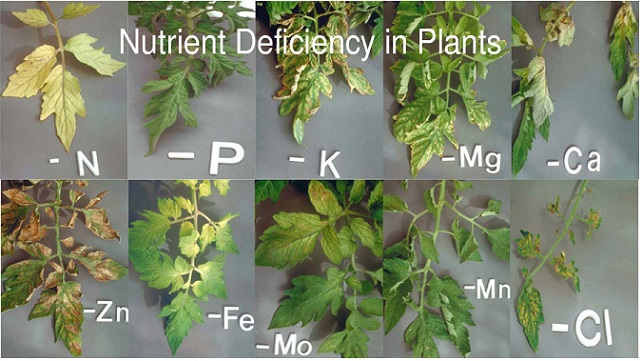
Plants need the right combination of nutrients to survive, grow and reproduce. When plants suffer from malnutrition they show symptoms of disease. A slightly higher or slightly lower concentration of an element can cause problems.
Definitions
Malnutrition: It is the pathological condition that results from the lack of supply of the plant with nutrients.
Toxicity: It is the pathological condition that results from the excessive supply of the plant with a nutrient or other element.
Simple malnutrition: Due to a deficiency of one nutrient.
Complex malnutrition: Deficiency involves two or more nutrients.
The nutrients of plants are divided into two categories:
- The Macronutrients and
- The Micronutrients
The Macronutrients are required by plants in relatively large amounts. These include Nitrogen, phosphorus, potassium, sulphur, calcium and magnesium.
The Macronutrients are required by plants in smaller quantities that why also referred to as trace elements like copper, manganese, zinc, iron, boron and molybdenum.
Both macronutrients and micronutrients are obtained from the soil through the root system of the plant.
The root system of plants needs certain conditions to receive the elements from the soil. One factor required is that the soil has the ideal moisture to allow the roots to receive and carry the elements. Sometimes correcting an incorrect irrigation program can prevent symptoms of malnutrition or toxicity. Another factor that plays an important role is soil pH. The pH must be within a certain range in order for the elements to be released from the soil particles. A third important factor is the soil temperature, which must be within a range within which the data can be absorbed. The ideal values of pH, temperature and humidity are not common for all crops but differ by plant type and crop. Thus, if the above is not observed, the nutrients may be available in the soil substrate but may not be absorbed by the plants. Measuring pH, texture and soil history are useful parameters to understand what elements we are missing.
Warnings
Many symptoms of malnutrition are similar to each other so we need to be very careful.
- It is very important to know what our plant species looks like when it is healthy, so that we can recognize the symptoms of stress, or for example some plants have differences in their leaves compared to others, even when they are healthy.
- Many micronutrients (trace elements) can be used by plants, but also by other nutrients. They can even work with other nutrients, making the lack of one element seem like a lack of another (for example, molybdenum is required by legumes to complete the nitrogen cycle).
- If there are other problems in the crop, such as waterlogging or an illness along with one or two cell deficiencies, the typical symptoms of malnutrition do not occur.
Detailed symptoms, causes and treatment of malnutrition and toxicity of macronutrients and micronutrients are listed below.
Macronutrients
1. Calcium (Ca)
Lack of calcium in plants typically occurs in roots, young leaves and especially on older, wrists and young shoots.
Deficiency causes:
- Low pH (acidic soils).
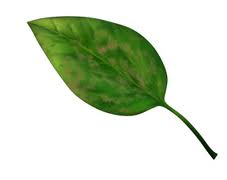
- Improper watering (the most common cause).
- Soils with high potassium concentration (K).
- Too dry or moist soil.
- High salinity.
Symptoms:
- Cachectic growth of the plant
- Distortion and irregular shape of young leaves.
- End ocular necrosis.
- Causing blossom-end rot on the wrist.
- Root thinning.
- Stem collapse.
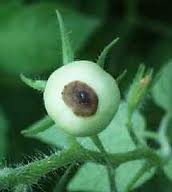
Treatment:
To treat calcium deficiency we can add a preparation to raise the pH of the solution, unless the growth of our plants is favored by an acidic environment. Regular pH monitoring should be performed to prevent any malfunction which is difficult to reverse if any damage has already been done.
The calcium toxicity, i.e. the greater concentration of the ideal, expressed as deficiency is other elements such as potassium (K) and magnesium (Mg).
2. Nitrogen (Ν)
Nitrogen deficiency occurs mainly in the older leaves but generally we have symptoms throughout the plant.
Deficiency causes :
- Overwatering (high soil moisture).
- Soils with a low percentage of organic matter.

Symptoms :
- Yellowing of older leaves (mainly at the base of the plant).
- Small intervertebral spaces.
- The whole plant has a light green color.
- Plant growth retardation.
Treatment:
In order to treat the Nitrogen deficiency we have to add some ammonia solution or nitrates (e.g NaNO3 ή KNO3)
Nitrogen toxicity, ie its higher than ideal concentration, is shown by a dark green color throughout the plant and rapid growth of shoots and is usually due to drought conditions.
3. Phosphorous (P)
Phosphorous deficiency couses growth abnormalities throughout the plant and mainly discoloration on the older leaves but also on the stems and young leaves.
Deficiency causes :
- High soil moisture combined with low soil temperature.
- Soils with a very acidic or very alkaline reaction.
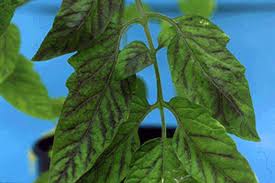
- Soils with poor ventilation (compacted soils).
- High concentration of zinc (Zn).
Symptoms :
- Discoloration of older leaves (mainly purple and bronze).
- Necrotic spots on the lower surface of the leaves.
- Redness of the stems.
- The whole plant has a dark green color.
Treatment :
To treat phosphorus deficiency we can add a solution with an organic source of phosphorus and apply it to the plant, either foliar or to the nutrient solution or substrate.
Phosphorus toxicity appears with symptoms of nitrogen or zinc deficiency and is usually caused by excessive lubrication with phosphate preparations.
4. Potassium (Κ)
Potassium deficiency in plants usually appears in young shoots, older leaves and fruits.
Deficiency causes:
- Low pH (acidic soils).
- Soild with Εδάφη με υπερβολική έκπλυση (π.χ αμμώδη).
- Insufficient soil moisture
- Low temparature of theσοιλ.
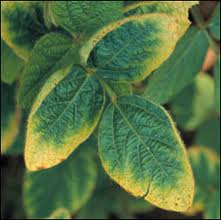
- Very dry or moist soils.
- High salinity.
- Competition with other elements, such as calcium, magnesium, nitrogen and boron.
Symptoms :
- Pale yellow shade of the leaf circumference.
- The plant stems are abnormally thin.
- Stiffness and premature lignification of shoots.
- The fruits are smaller in size, show discoloration inside, become watery and soft and show pale yellow spots or entire areas, irregularly shaped.
Treatment :
To treat potassium deficiency we can add a preparation containing potash, such as potassium nitrate, potassium sulfate and potassium dihydrogen phosphate.
Potassium toxicity manifests as nutritional deficiencies of other elements such as calcium (Ca) and magnesium (Mg).
5. Magnesium (Μg)
Magnesium deficiency is one of the most common nutritional deficiencies in plants and usually appears first in older leaves and fruits, as it is a mobile element.
Deficiency causes:
- Low pH (acidic soils).
- Overwatering.
- Sudden lack of soil moisture.
- Sandy soils.
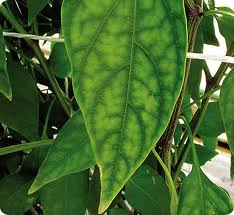
- Vrey dry or moist soils.
- High silicity.
- Low temparature.
Symptoms :
- Peripheral and later lateral or mesoneurial leaf chlorosis between the main ribs.
- Red discoloration of the leaves instead of chlorination .
- Smaller crops.
Treatment :
To deal with magnesium deficiency we can add a magnesium preparation or solution, which will contain magnesium sulfate in combination with nitrogen fertilization
Magnesium toxicity appears as a deficiency of other elements such as calcium (Ca) and potassium (K).
6. Sulfur (S)
The Sulfur deficiency is rare and usually appears fisrt in the young leaves, in the mesoneurs of the leaves and generally throughout the plant.
Deficiency causes :
- Soils with a low percentage of organic matter.
- Sandy soils.

- Poor drainage of the substrate.
- Low temparature.
Symptoms :
- Mesoneural chlorosis of the leaves between the main ribs.
- Yellowing of young leaves.
- Chlorination and cachexia throughout the plant.
Treatment :
To treat sulfur deficiancy we need to add some sulfur preparation.
Sulfur toxicity is an extremely rare phenomenon and can even come from environmental factors or from competition with other nutrients.
Micronutrients (trace elements)
1. Iron (Fe)
Iron deficiency in plants usually occurs mainly in young leaves.
Deficiency causes:
- High pH (>6,5).
- Poor soil drainage.
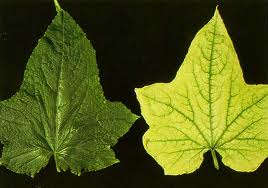
- Overwatering.
- Excessive lubrication (high concentrations of phosphorus, zinc, manganese or copper).
- High salinity.
- Soils with low organic matter content.
Symptoms :
- Mesoneurial chlorosis in young leaves (in extreme cases the leaves discolor and show whitening or brown spots).
- Rarely, necrosis of the apex and the periphery of the plate.
- Slow growth due to reduced photosynthetic capacity.
Treatment :
To treat iron deficiency you have to add a solution a formulation in either chelate or sulfate form. It is good, when it comes to alkaline soils, to apply only with a formulation of iron in chelated form.
Iron toxicity appears by bronze color on the leaves and silver and brown spots .
2. Zinc (Zn)
Zinc deficiency appears mainly in the younger leaves.
Deficiency causes:
- High pH .
- High soil phosphorus content.
- Low soil nitrogen content.
- Soils with low organic matter content.
Symptoms :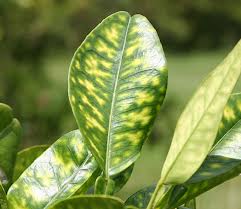
- Small leaves
- Twisting of the leaves
- Short intercostal spaces
- Uniform reduction of the green color of the leaves.
- In more severe lack of foliage is observed.
Treatment :
To treat zinc deficiancy we have to add a formulation of zinc formulation, which we apply by spraying, foliar.
Zinc toxicity appears by vivid green color on the leaves.
3. Manganese (Mn)
Manganese deficiency in plants usually occurs mainly in young leaves
Deficiency causes :
- High pH (>6,5).
- Soils with high concentration of iron (Fe).
- Soils with reduced nitrogen concentration (N)
- Dry enviroment.
- Soils with poor ventilation (compacted soils).
- Increased substrate moisture.
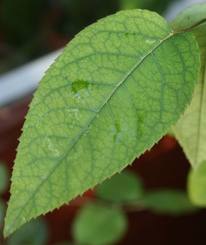
Symptoms :
- Mesoneurial chlorosis in young leaves.
- Necrotic spots on the leaves.
- Deformation of the leaves.
- Plant cachexia.
Treatment :
To treat Manganese deficiency we have to add a solution of manganese sulfate and apply it foliarly.
Manganese toxicity appears as chlorotic spots on older leaves and reduced root growth is observed.
4.Boron (Β)
Boron deficiency usually appears in young leaves.
Deficiency causes: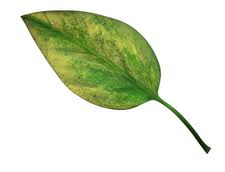
- Soils with pH <5,5 και >6,8 .
- Low soil nitrogen content.
- Sandy soils with low content of organic matter.
Symptoms :
- Small leaves
- Young leaves with light green color and then yellow.
- Root system of limited growth and brown hue.
Treatment :
To treat boron deficiency we apply foliar spray with borax.
The boron toxicity appears with yellow leaves and intense defoliation.
5. Copper (Cu)
Copper defeciancy usually appears in young and older leaves.
Deficiency causes:
- High pH.
- Low soil nitrogen content.
- Soils with poor ventilation (compacted soils).
- Increased substrate moisture.
Symptoms :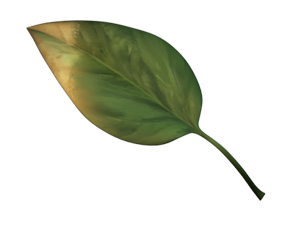
- chlorotic streaks on either side of the midrib
- dark brown necrotic lesions on leaf tips
- bluish green and chlorotic streaks near the leaf tip
- rolling of new leaves
Treatment:
Copper deficiency is rare and is easily treated by spraying the foliage with a dilute solution of copper sulfate, which must be neutralized with lime.
Copper toxicity appears with symptoms of iron deficiency and its main symptoms are leaf chlorosis and reduced rate of photosynthesis.
6. Molybdenum (Μο)
- Low pH <5,5.
- Low soil nitrogen content.
- Soils with poor ventilation (compacted soils).
- Increased substrate moisture.
Symptoms :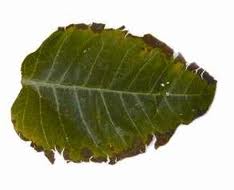
- Leaf chlorosis in older leaves.
- Leaf margins wilting.
- Leaf & meristem death















